Rich In History And Grandeur
Story And Photos By Scott E. Raymond
When 19-year-old University of Southwestern Louisiana (USL) student Mike Richard first came to work at Rip Van Winkle Gardens in the spring of 1969, he must have been in awe of the one-of-a-kind tourist attraction that had opened to the public three years before. Located on Jefferson Island above an ancient salt dome and about 10 miles west of New Iberia, La., the Rip Van Winkle Gardens property already had a storied history.
Acclaimed 19th century actor Joseph Jefferson bought Orange Island (now Jefferson Island) in 1869 and built his winter home — a 22-room palatial mansion now known as the Joseph Jefferson Home — on the property in 1870.
According to Richard’s account of the years following Jefferson’s death in 1905, in 1917, the partnership of John Lyle Bayless, Sr., of Kentucky, Paul Jones, also of Kentucky, and E.A. McIlhenny of Avery Island, La., bought Jefferson Island — 2,000 acres of the Joseph Jefferson estate. Bayless, Sr.’s only child, John Lyle Bayless, Jr., later became sole owner of the property. In the 1950s, he cultivated his love for camellias and other plants into a magnificent private display for family and friends. In 1966, Bayless, Jr., opened Rip Van Winkle Gardens to the public.
Michael A. “Mike” Richard, Sr., a native of Breaux Bridge, La., came to Rip Van Winkle Gardens (the Gardens) in April of 1969 as a sophomore college intern majoring in horticulture. He says his first interest as a child was geology. But when he was 12, his family and two uncles moved to the San Francisco Bay area, and while living there, he was introduced to the world of plants.
“I got ‘bit by the bug,’” says Richard. “I got exposed to the growing of exotic plants, orchids especially, with my uncle,” he says. “He had married a lady from California, and they had cymbidium orchids that took the cool climate, and also tropical orchids. And then (a year later) we came back to Louisiana.
“I spent a lot of time growing up with my maternal grandparents,” says Richard, “and my maternal grandmother, especially, had a great affinity for growing plants. I spent a lot of time helping her and built my first greenhouse when I was about 13. I started doing all kinds of organic gardening; reading books on organic gardening; and growing all kinds of things. That (interest) grew until I was about ready to go to college. I majored in horticulture — I have a degree in Ornamental Horticulture from USL (now UL).”
Richard spent most of the summer of 1969 working at the Gardens under the guidance of an Englishman named Geoffrey Wakefield, who Bayless had brought to Rip Van Winkle Gardens from England in 1966 to develop the Gardens into an English-style garden.
“(Wakefield) was a camellia and rhododendron expert,” says Richard. “He had been trained in the old apprentice system. That’s what (Bayless) was looking for — a hands-on guy. I came to work here to study under Wakefield to get some hands-on training to balance with the academic training I was getting at UL (University of Louisiana at Lafayette). It’s very interesting because working with Wakefield was a completely different atmosphere than working in the university setting. He had a lot of history working some of the famous gardens in England, and he was very knowledgeable on the subject of camellias, and rhododendrons — that we don’t grow well here. Most of the rhododendrons grown here can’t stand the heat, but the camellias do extremely well. The climate (here) is very similar to where (the camellias) come from in Asia, in Japan and China.
“Bayless started (his English) garden around the camellia. That was his first interest. The camellia that he saw is right here behind (Cook’s Cabin) and it’s called the Jeanerette Pink. And he was amazed as a child to see this (plant) blooming in the dead of winter. It was very unusual because they were from Kentucky, and in Kentucky everything shuts down during the winter.”
After graduating from USL in 1971, Richard began working on a master’s in landscape architecture at LSU while continuing to work at Rip Van Winkle Gardens on weekends, holidays and summers. In 1973, after deciding he wasn’t interested in a career in landscape architecture, Richard planned to leave the Gardens and start a nursery on his own when Bayless approached him about staying and starting a nursery there. His offer was enticing because it offered Richard not only the opportunity to start a nursery on land Bayless owned adjacent to the Gardens, but also with seed money to get it started and a percentage interest in the company.
“It was a great opportunity for me,” says Richard. “When I came to work here in 1969, I had a camera and I had a bicycle and my clothes. That was it! The new company was called Live Oak Gardens. The nursery was designed to create a stream of income to support the Gardens … (that) could not be self-sustaining at the time.”
Also in 1973, Bayless changed the name of the Gardens from Rip Van Winkle Gardens to Live Oak Gardens. Richard explains: “It was my idea (to change the name to Live Oak Gardens). I had started the nursery in 1973 with Bayless’ backing. In retrospect, Rip Van Winkle was a good name (for the Gardens, but) I really didn’t like the name at all (at the time). Rip Van Winkle is so out of place for south Louisiana. You know, (the name makes me) think of the Hudson Valley.”
In 1974, Richard met his future wife Louise through a family in-law’s connection.
“My mother was worried that I stayed here (at the Gardens) all the time and worked,” said Richard, “and she said, ‘How are you going to ever meet anybody? You never go anywhere. I’m going to send a nice girl for you to meet from Arnaudville.’”
Richard and Marie Louise Lastropps married the following year in 1975.
After starting Live Oak Gardens nursery in 1973, Richard also continued contributing to and witnessing the further development of Bayless’ English garden. Prior to November 20, 1980, Live Oak Gardens had grown to 20 acres and had added several exciting new additions, including a Reception Center and a half-acre, glass-covered Conservatory — completed in early 1980 — that featured 3,000 specimens of plants.
Bayless had also recently completed a beautiful retirement home on the edge of the Gardens that overlooked beautiful Lake Peigneur.
Richard says that on the evening of November 19, Bayless hosted a cocktail party at his new home on the lake. Richard was at the party and remembers being on the gallery of the upstairs front porch talking with a couple from Houston; a geologist, who owned a company there, and his wife. Richard says he later learned that the geologist had considered buying the salt dome mine but reconsidered after finding out that there was one location in the mine that was particularly vulnerable — a room on the 1,300-foot level. He decided not to buy it.
A Catastrophe Of Epic Proportions
At exactly 5:45 a.m. on the morning of November 20, 1980, Mike Richard’s sister, who at the time was living at Rip Van Winkle Gardens with Richard’s family, felt her bed shake.
Two hours later, Richard was sitting at his desk in the new office building that adjoined the new Conservatory when he looked at the window and saw it rattling.
Says Richard:
“I could see the windows were vibrating and I could see pictures on the wall and the reflection in the glass. The land was vibrating and you could feel it, like a rumble every so many seconds. It was a repeated rumble, like an oscillation. The vibration would stop and then it would start again. I walked out onto the front porch — we had a fountain (that had been) built into the foundation of the building — and the water in the fountain was sloshing back and forth. This was a big masonry building, very heavily constructed — it was built to last. I had no idea what could be causing this (rumble); we couldn’t hear anything.
“By that time, I had noticed that the (oil) drilling rig was gone. There had been a drilling rig some 600 (to) 1,000 feet from that building and the drilling rig was built on a platform, and that had disappeared. One of my employees — at 6 or 6:30 in the morning — (had gone) to feed Bayless’ German Shepherds, who were in a kennel near the lake, and he looks and there’s the drilling rig missing.”
Deep under Lake Peigneur, something had breached the mammoth salt mine, which had five levels and a depth of 1,800 feet. A huge vortex was spinning in the lake sucking water, mud and anything in its path into the many galleries of the salt mine below.
Richard continues his riveting narrative about the disaster: “At 10 o’clock (in the morning), approximately, the superintendent (of the salt mine) had just stopped in my office to tell me that they were going to lose the mine. They had just gotten off a tug boat to see what was happening, and they saw the whirlpool, and the tugboat was almost pulled into the vortex. They went back to the dock and he came directly and told me. They had evacuated 53 people from the mine once the leak was detected.
“About noon, we were given notice by the sheriff’s department that it was time to go because the crater (was) growing in our direction. We left and we moved to the school house, which was half a mile away. That was the Jefferson Island School House, a three-room school house where the elementary kids once went.
“After we left (for the school house), the news people starting coming and the helicopters were circling. People were taking photographs and people had started congregating along the edge of the crater watching what was happening.
“(People) saw the water backing up under the Delcambre Bridge, the water flowing north instead of south.
“(Two men) in a boat (on Lake Peigneur) had been fishing and they got trapped on the mud flat. As the water ran out of the lake, they were stuck on the bottom. They were in a little aluminum skiff and they had some paddles and they were able to drag the boat over the mud and land it right at Bayless’ house. They left the boat and all their stuff behind. They were so lucky; they were within 50 feet of the edge of the crater where it was breaking off. That’s how close they came to losing their lives.
“At about 4 o’clock in the afternoon, we heard this loud noise and it was the end of the filling of the mine. There was a geyser where the salt mine building had been — where the mill building had been. There was a geyser of debris and dust and trash. About a 400-foot geyser shot up in the air. (It was) the roar of the air escaping the mine. The water was coming in faster than the air could escape, so it was compressing the air. They could hear it in New Iberia 10 miles away. It was like a huge air compressor.”
Miraculously, there was no loss of life, but Richard says the catastrophe did cost the jobs of 260 workers. The flooded salt mine never reopened. Sixty-five acres of the Gardens had been lost to the disaster. Following official investigations and numerous lawsuits, the exact cause of the catastrophe was never resolved.
Richard talks about the immediate fallout and subsequent acceptance that followed the disaster:
“(Right) before our eyes, all the work that had been put into (the Gardens) — Bayless’ new home, the Reception Center, the new buildings — I spent three years building all of this and the green houses and the glass house, the Conservatory — everything … (it was) just melting away, right down the drain.
“For a long time after that I had a dream of being in (Bayless’ house) when it went down, and my family was caught in the house and there was nothing I could do; I was helpless. It was a recurring nightmare.
“What did I think? All I could do is accept it, and, I think, too, Bayless (felt that way). He was very pragmatic about it. Life goes on.
“(Before the catastrophe), we had a little bitty view of the lake and now (a view of) over 180 degrees. So we lost something, but we got something equally valuable. I look at it optimistically.”
In the subsequent several years following the tragedy up to the Gardens’ reopening in 1984, recovery went on and new buildings at Live Oak Gardens were completed. Among the new amenities were the Gift Shop, Theatre, and Café Jefferson.
“Bayless bought a little house and moved it onto the place, and then he spent half his time here and half in Louisville. And then he bought a house in Maui. He lived to be 75.”
In 1985, John Lyle Bayless, Jr., died. Three years later, a beautiful and spacious new building for wedding receptions and business meetings was completed and named the Bayless Conference Center in his honor.
From English Garden To Eclectic Garden Design
After Bayless’ death in 1985, Richard continued to manage the wholesale nursery, Live Oak Gardens, later to become its principal owner. He also managed the Gardens until a new manager was hired in 1990 by the Live Oak Gardens Foundation that Bayless had established in 1978. In 1996, the Foundation sold the Gardens to a new owner, who changed the name of the Gardens back to its original name, Rip Van Winkle Gardens. In 2003, the owner returned the Gardens to the bank, which, in turn, sold the Gardens to Live Oak Gardens.
Today, Mike Richard’s design of Rip Van Winkle Gardens is very different than the one Bayless opened to the public in 1966.
Richard explains:
“I’ll tell you the reason or motivation for changing it. The English garden, if you can imagine, is built like a series of rooms in a building. It was all segmented in little different vignettes, different themes. That was Wakefield’s idea and Bayless’ concept, as well. The rooms were separated by walls of bamboo so you couldn’t see one from the next. With each one, you came through an opening and you had a surprise. You never knew what was going to be next, what impact you were going to have. Bayless used what he had available. They had a lot of bamboo here they had planted over the years that came from Avery Island. Back in the 1930s, (the owners) started planting bamboo here and exotic plants from Asia that came from Jungle Gardens. And E.A. McIlhenny was very interested in promoting the camellias. He had a nursery as well as the Jungle Gardens. And so a lot of the plants (at Rip Van Winkle Gardens) came from Avery Island.
“(Bayless) used the bamboo to create walls, hedges. But the hedges were like 30, 40 feet tall. It was very much an enclosure, and to be able to access these places you had to go down little paths. So there was no way to bring in bulk material or machinery. Everything was on a small scale and it meant a lot of labor. Everything had to be brought in by wheelbarrows and (it was) all hand work. And it came from the days when labor was dirt cheap. But as time (has gone on), productivity per person has fallen, people are getting spoiled, and most people are used to using machinery instead of wheelbarrows.
“Then we had a major freeze and (it) killed all the bamboo to the ground. So all of a sudden, now you could see the whole place. From one spot at the Joe Jefferson house, which is on the high point of the garden, you could see the whole place. So that gave us an opportunity and that was the impetus for changing it to create vistas, let’s say, and bigger views.
“The heat in South Louisiana, as you know, is so stifling. When you put bamboo around it, (there is) no air movement. It is like a steam box. By opening it, now we get the lake breeze. It changes the environment, which makes it a lot more pleasurable for the visitors. What works well in England is not the best design for the humid South”
When I ask Richard what style he would classify the Gardens today, he responds by saying, “eclectic.”
“This climate is more tropical, so our plants had to fit,” says Richard. “The majority of the plants, excluding the big trees, that make up the garden and make up horticulture in this place — in this South Louisiana environment — come from China and Japan. And so the plants (and) all the camellias come from there; all the bamboos come from there.
“The Gardens feature seasonal color, with annuals, magnolias, camellias and a wide range of sub-tropical plants. Plants of Asian origin represent a major part of the collection as they make up the majority of ornamental species in our climate zone. We feature bamboos adapted to this climate from one foot to 40 feet tall. A spectacular selection is Tropical Blue Bamboo with canes up to 3 ½ inches in diameter. The word eclectic can be used to describe the Garden’s design, the (Joseph Jefferson) Home’s architecture, as well as the plant collection.”
Rich In History And Grandeur
Today, Rip Van Winkle Gardens is truly a family affair. Richard’s daughter Michelle runs the Gardens, the food service and wedding business. His son Michael, Jr., runs the wholesale nursery next to the Gardens, Live Oak Gardens. Richard’s wife Louise creates some of the dishes served at Café Jefferson. Richard, who has been retired for three years, lends a helping hand to whatever the family business needs. Richard says that, today, the inside of the Gardens is approximately 15 acres, but the total acreage is 350.
Richard and I, along with several others in his entourage, walk some of the Gardens and discuss a few of the many attractions enticing the visitor to come closer.
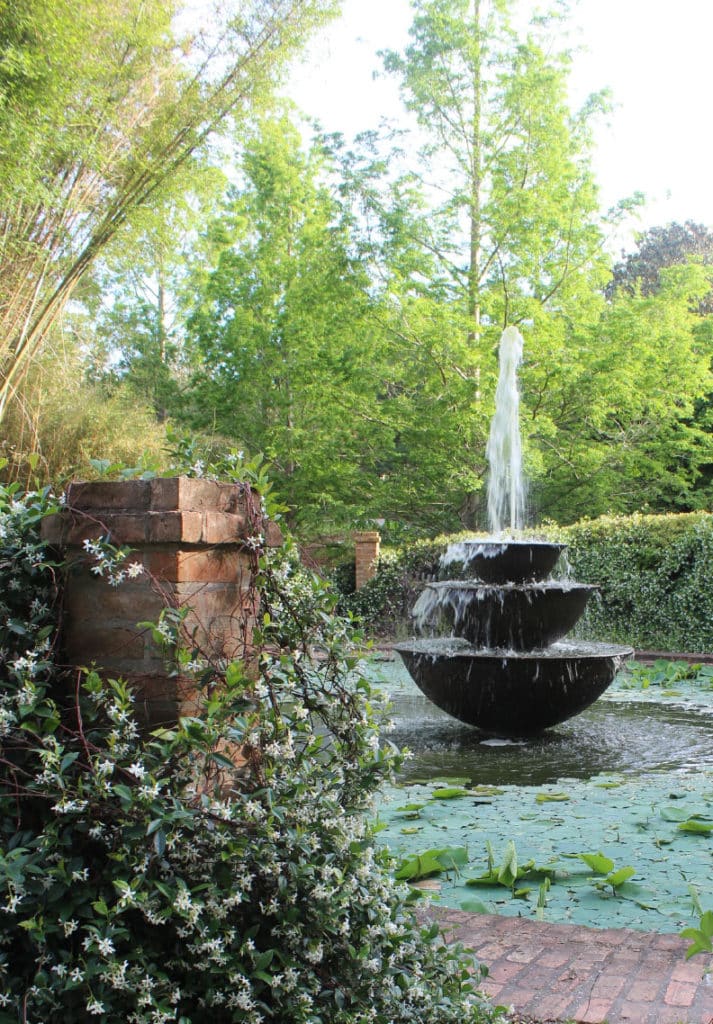
“(This) area has the best breeze. Originally, a variegated cane was planted 50 years ago. But the green was taking over, and it was so thick that we couldn’t fill in the gaps of the dying bamboo that was blooming sporadically. So I took out some of the old water oak trees that were (producing) too much shade and I introduced a new kind of bamboo, the gracilis, which is a more beautiful bamboo (that) doesn’t produce as many side branches. And the idea is to create a taller cathedral, a gothic arch, you might say, with this new bamboo. And the gracilis is immune to an insect problem common to many clump bamboos. That was planted last summer.”
To our immediate right is a bamboo entrance to a tranquil setting of lush green ground cover, cypress trees, bamboo and camellias around the Japanese Tea House.
“When I came here, there was a Japanese Garden and they had a little hut made out of bamboo, but it was falling apart; the termites had gotten it,” says Richard. “I’ve always been fascinated since (I was) a kid (with) things Japanese. It caught my eye. I love the simplicity, the purity of the Japanese designs. So I said this is the chance to build a nice Tea House, and I drew up the basic plan and showed the architect. We built that in 1974, a year after we started the nursery.
“I tried to capture the spirit and the proportions using the module of the tatami mat. Every room in a Japanese building is expressed not in square feet or yards; it’s in mats.
We head back toward Café Jefferson for lunch and pass to our right one of the Gardens’ more recent additions, the Balinese Gateway, which was custom carved on the island of Bali, Indonesia, and brought to the Gardens. The exotic and commanding stone structure, not many steps from the lake’s edge and visible from Café Jefferson and the Bayless Conference Center, is used for wedding ceremonies.
We arrive at Café Jefferson’s lovely and picturesque outside patio, and my wife and I both order the Seafood Bisque which, loaded with seafood and a thick creamy sauce, looks delicious. Richard proudly tells us that the item is one of the dishes Louise created for and prepares at Café Jefferson.
A peacock is in our midst not far away. I ask Richard if the peacocks were introduced as a Bayless attraction or Mike Richard attraction.
“Mike,” Richard responds. “Peacocks are like the icing on the cake, a little extra, like a little lagniappe. They add color, they add movement and exotic sounds.
“Those peacocks have been here naturally rearing on the ground. So every year, we save so many young ones and it replaces the attrition. They have maintained their numbers over 30 years.”
Following lunch, Richard and I agree to rendezvous at the Joseph Jefferson Home. A few minutes later, the impressive house is before us, a breathtakingly beautiful and stately wood mansion flanked on both sides by massive live oaks and a vast front lawn.
I ask Richard what he thinks the 1870-built Joseph Jefferson mansion brings to Rip Van Winkle Gardens as a tourist attraction, adding that I think that they are two distinctly different attractions, but they seem to thrive on one another.
“It’s interesting that you point that out,” says Richard. “The house is eclectic. The house is made up of different styles. It’s not South Louisiana. It’s got Moorish influence on the inside. If you look at the moldings and the cutouts, those all stem from the original design that, to my knowledge, is of the Alhambra in Granada, Spain. The Moorish. The home is built on the Georgian plan from its Anglo origin. Adapted to the Deep South are the ventilation details. The ornamental brackets, railing designs and rope-moldings and fretwork stem from Moorish origins.
“There was a (book) by Washington Irving called Tales of the Alhambra. Irving is also credited, as I recall, (with) writing ‘Rip Van Winkle.’ As far as I remember, I think he and Joe Jefferson were friends. And so we think, but we can’t prove this, Joe Jefferson may have introduced that aspect of (the mansion) — the dining room, especially — to commemorate his connection with Washington Irving and the Alhambra. And we have an Alhambra garden in the Gardens.”
“The house was built locally?” I ask.
“Yes, (built using) local sawmills,” Richard replies, “indigenous materials. I think the only thing they brought in was a little mahogany for the railings and the slate on the roof. The rest of it was local. All the millwork came from New Orleans, as I recall.”
Richard talks about The Carriage House and the Servants Quarters bed and breakfasts, both located to the rear of the home. “The Carriage House dates to the same date as the (Joseph Jefferson) house. (The carriage would come) with two bodies on the chassis, a winter body and a summer body, and they kept those in that building.
“The front part (of the Servant’s Quarters), the first part closest to the house, is 1870; the back part was built later.”
We are at Cooks Cabin finishing up the interview, and I ask Mike Richard if there is anything else he would like to say. He looks at me with a thoughtful smile and with the eyes of someone who has, indeed, witnessed many years of incredible experiences at a place rich in history and grandeur, and speaks.
“I always felt Mr. Bayless had been looking out for Mike, to make sure that Mike made this place a success. Let me tell you why; one of the reasons — the fact that I had an opportunity to buy the place and that window of opportunity just happened to open because of economic circumstances.
“This business stays afloat because of local support. We’ve got really good local support.
“Mr. Bayless must be smiling, and if he can, he must be looking down favorably on what I’ve done.”
Author’s note: For info about Rip Van Winkle Gardens’ hours of operation, directions to the Gardens, tours, bed and breakfast accommodations and other general information, visit www.ripvanwinklegardens.com or call 337-359-8525.



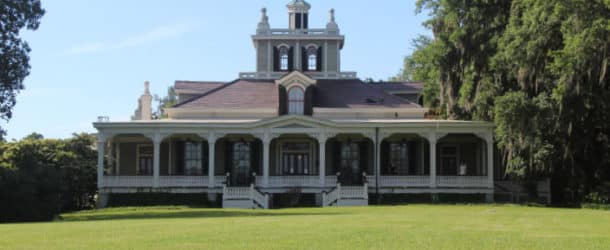
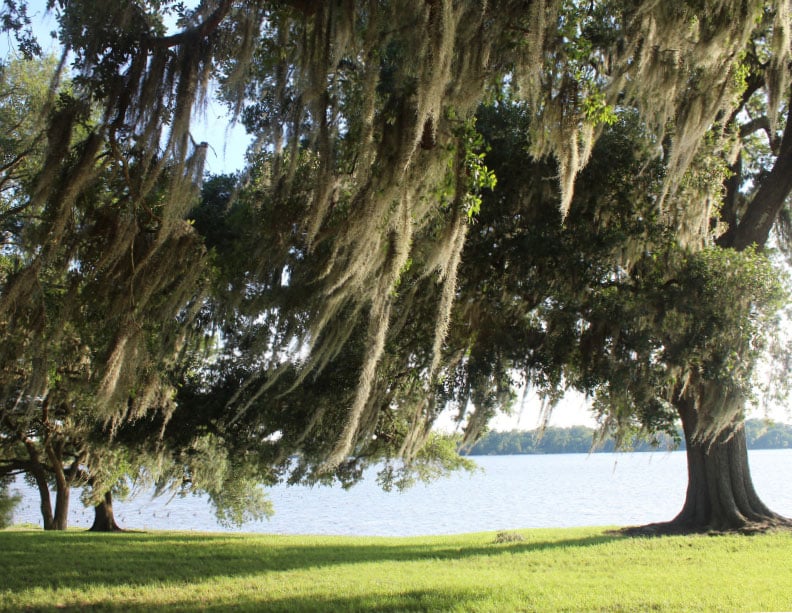

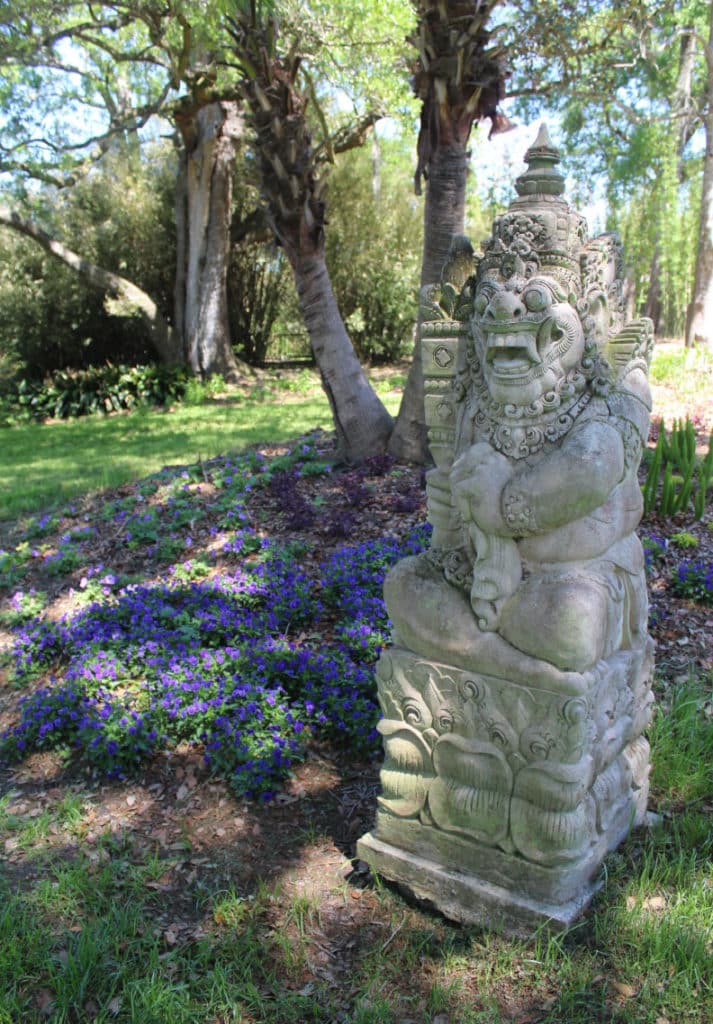
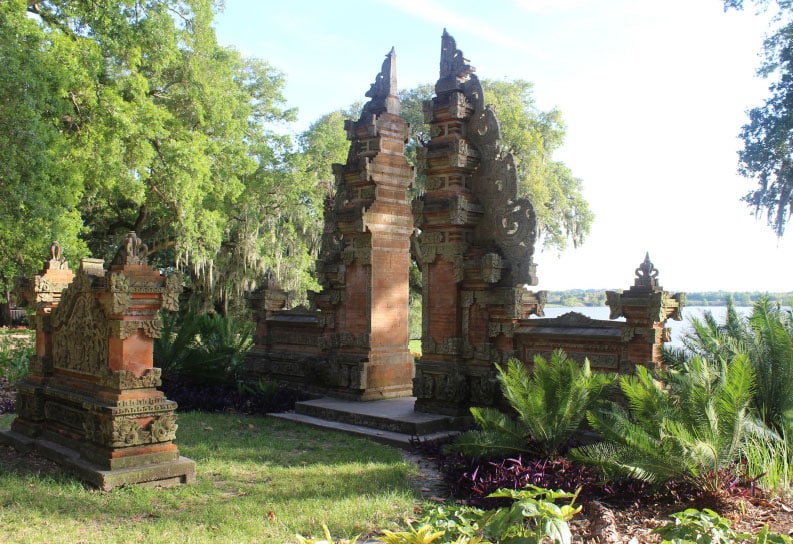


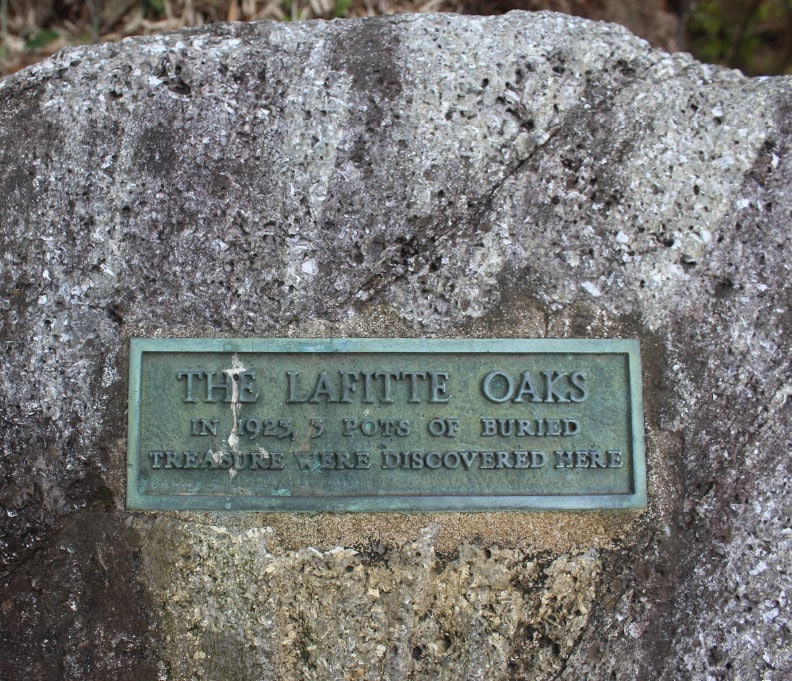












Comments are closed.